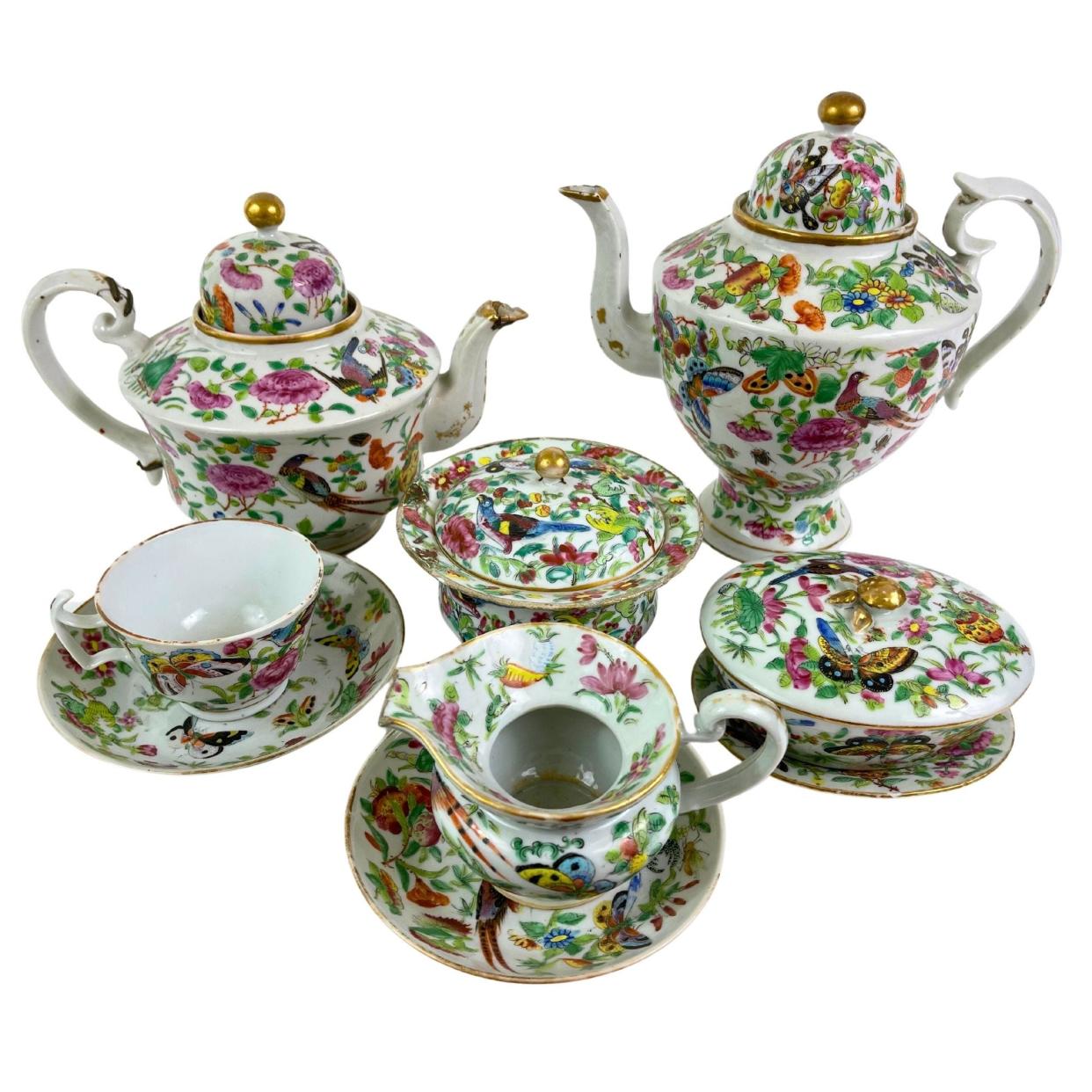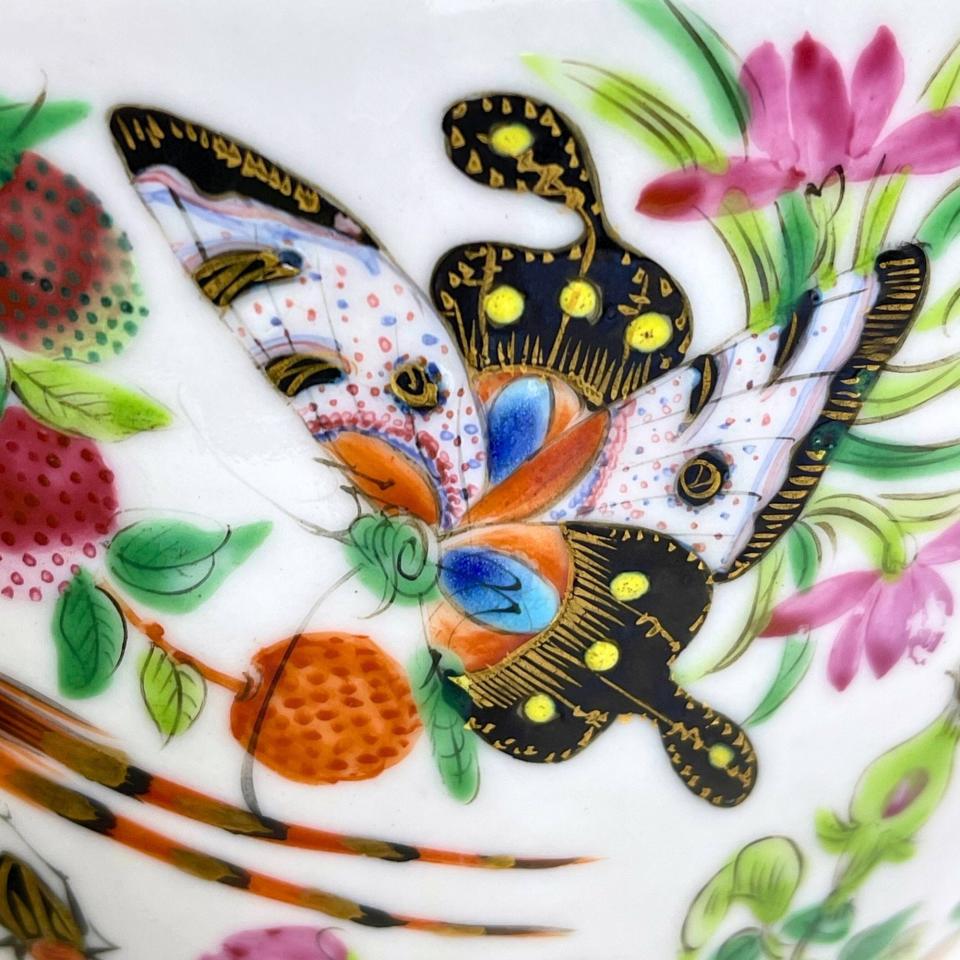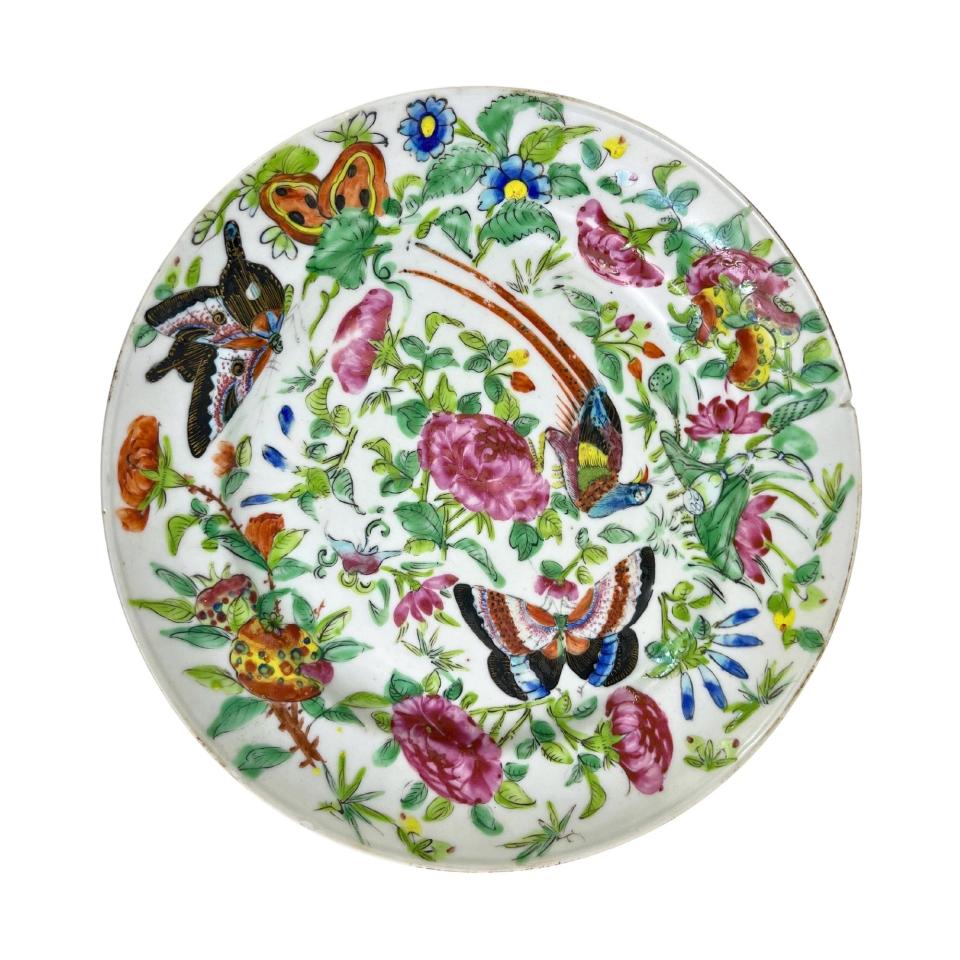Antiques: Porcelain from across the sea

- Oops!Something went wrong.Please try again later.
For all the China-bashing that seems to be the norm in America these days, few countries have a longer history of trade. In particular, elaborately hand-decorated tableware was the rage among early Americans of affluence, and no less a luminary than George Washington was a frequent purchaser. Even without the Amazon-like delivery we've all come to expect today, the landed gentry of yesteryear would often place repeat orders for custom Chinese porcelain and then await months and sometimes years for delivery ... if it showed up at all.
All the same, it's easy to see the appeal of these intricately patterned pieces and why it was worth waiting for. Let's explore.
Following the Middle Ages, Portugal was among the first to open trade routes with China as its explorers fanned across the seven seas. It was around the year 1500 that Chinese pottery makers began to make products specifically for export to Europe. It wasn't just porcelain, but artwork, fabrics, tea and other items that began to appear in British and other markets. Heavy and impervious to water, porcelain also had qualities that made it ideal for storage in the lowest part of a vessel that was otherwise unsuitable for more fragile commodities.
As the market got rolling, western traders would bring samples of European-made goods for Chinese artisans to copy. At first, the color blue, famous for its association to royalty, was the dominant tone, but the development of polychrome enamels allowed for coats of arms and other custom imagery to be applied.

Most early shipments of porcelain went to Europe, but in the 1700s, that market began to decline just as demand from America started to increase. Many among the newly prosperous Americans had seen examples of Chinese tablware during their continental travels and were anxious to bring it to their own tables.
Among those was Washington. As a frequent entertainer of large groups at Mount Vernon, he was anxious to display his success with exotic tablware. His first order was placed in 1758 and received five years later. It included more than 50 pieces in a custom blue-and-white pattern featuring the Society of the Cincinnati insignia.
Over the course of his life, Washington would add to his inventory at least nine more times, and was known to complain when subsequent shipments were delayed. He paid for it all with shipments of tobacco to England, which in turn created the credits he used for his purchases of Asian goods.
Following the Revolutionary War, direct routes of trade became the norm between China and the New World. By the dawn of the 19th century, dozens of ships loaded with goods were regularly going back and forth across the Pacific. Unfortunately, careful packing was not always a priority and broken pieces frequently needed to be repaired upon arrival, often with silver staples.

Today, the best examples of this art reside largely in museums and private collections, although occasionally individual pieces and even sets will surface in galleries like ours. It's not cheap whenever it comes for sale, but best-of-breed items rarely are.
Mike Rivkin and his wife, Linda, are longtime residents of Rancho Mirage. For many years, he was an award-winning catalogue publisher and has authored seven books, along with countless articles. Now, he's the owner of Antique Galleries of Palm Springs. His antiques column appears Sundays in The Desert Sun. Want to send Mike a question about antiques? Drop him a line at info@silverfishpress.com
This article originally appeared on Palm Springs Desert Sun: Antiques: Porcelain from across the sea

